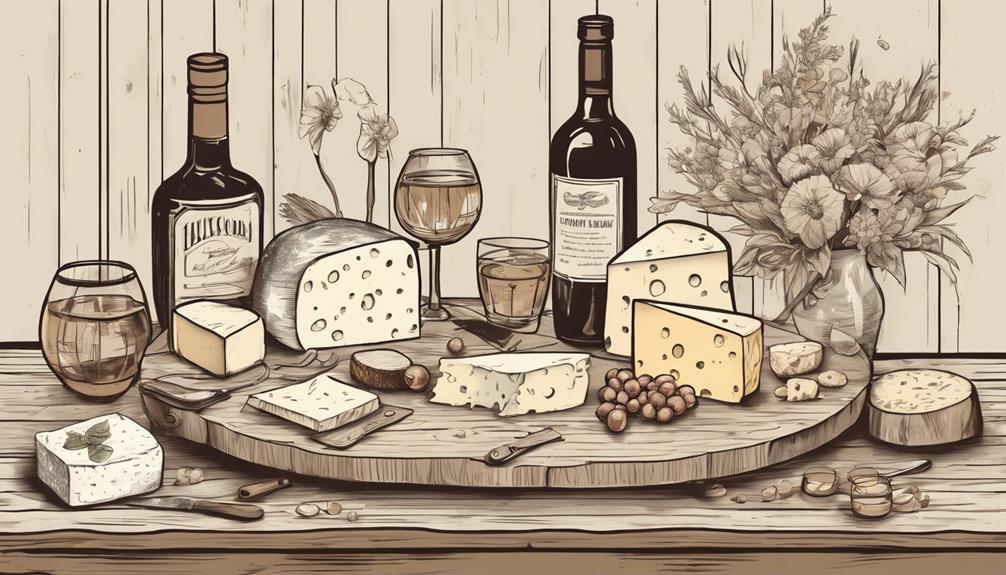How To Become More Self-Sufficient Without Starting a Full-Blown Farm…
Want to start preserving your harvest, making your own soap, or building a backyard root cellar — but not sure where to begin? “Homesteading Advice” gives you instant lifetime access to 35+ practical homesteading books on food preservation, veggie gardening, DIY natural cleaning products (save over $250 per year with this skill alone), brewing, off-grid energy, and a whole lot more…
Click Here To Check It Out Now!
“I’m planning a special dinner party and want to impress my guests with a cheese and whiskey pairing. I’ve heard they can complement each other really well, but I’m not sure where to start. What should I consider when pairing different types of cheese with whiskey? Any specific combinations that are sure to be a hit? Thanks, Sharon, Vancouver, Canada.”
How Do You Pair Cheese With Whiskey?
Sharon, you’re absolutely right—cheese and whiskey can make an exceptional pairing that will wow your guests. While wine and cheese usually grab the spotlight, whiskey’s diverse flavor profiles offer an exciting alternative. Here’s how to navigate this nuanced pairing.
Understanding Whiskey Profiles
To start, it’s vital to understand the basic flavor profiles of whiskey. Whiskey can generally be categorized into five types:
- Bourbon: Known for its sweetness and notes of vanilla, caramel, and oak.
- Scotch: Can be divided into single malt and blended; flavors range from smoky and peaty to light and floral.
- Irish Whiskey: Typically smoother, with flavors of fruit, vanilla, and spice.
- Rye: Spicier than bourbon, with strong notes of pepper, cinnamon, and nutmeg.
- Japanese Whiskey: Often has subtle and balanced flavors, borrowing smokiness and floral notes from Scotch.
Understanding Cheese Profiles
Next, understanding cheese types is equally essential. Cheese can be broadly divided into several categories:
- Fresh Cheeses: Soft and creamy, like mozzarella and chèvre.
- Soft-Ripened Cheeses: Creamy and soft inside with a bloomy rind, such as Brie and Camembert.
- Washed-Rind Cheeses: Have a stronger aroma and flavorful rind, like Époisses or Taleggio.
- Semi-Hard Cheeses: Firm but still pliable, including Gouda and Havarti.
- Hard Cheeses: Aged for longer periods, with more robust flavors, like Parmesan and Cheddar.
- Blue Cheeses: Characterized by blue or green veins of mold, such as Roquefort and Stilton.
How to Pair Cheese and Whiskey
When pairing whiskey and cheese, the goal is to create harmony where neither overpowers the other. Here are some tips to keep in mind:
- Match Intensity: Pair bold cheeses with robust whiskeys and mild cheeses with lighter whiskeys. For example, a smoky Scotch pairs well with a bold blue cheese.
- Balance Flavors: Complementary flavors will enhance each other. Sweet bourbon works beautifully with creamy, sweet cheeses like Gouda.
- Consider Texture: The mouthfeel of both the cheese and whiskey should work in harmony. Creamy cheeses can contrast nicely with the sharpness of rye whiskey.
Specific Pairings to Try
Still unsure? Here are some pairings that are sure to impress your guests, Sharon:
Bourbon and Aged Gouda:
- Why: Bourbon’s caramel sweetness balances beautifully with Gouda’s nutty, caramelized flavors.
- Example: Try a Pour of Woodford Reserve with a slice of Beemster Aged Gouda.
Scotch and Blue Cheese:
- Why: The smoky, robust nature of Scotch stands up to the strong, pungent flavors in blue cheese.
- Example: Pair Lagavulin 16 with a good quality Stilton.
Irish Whiskey and Gruyère:
- Why: The smooth, slightly sweet profile of Irish whiskey complements the nutty, earthy flavors of Gruyère.
- Example: Jameson Irish Whiskey paired with aged Gruyère.
Rye Whiskey and Cheddar:
- Why: Rye’s spicy notes create an interesting contrast to the sharpness of aged Cheddar.
- Example: Bulleit Rye with a sharp, aged Vermont Cheddar.
Japanese Whiskey and Camembert:
- Why: The balanced and subtle flavors in Japanese whiskey can harmonize well with the creamy, mushroomy notes of Camembert.
- Example: Hibiki Harmony with a ripe Camembert.
Other Factors to Consider
When planning your tasting, Sharon, consider these additional elements:
- Temperature: Serve cheese at room temperature to ensure that its flavors come through. Chilled or too-warm cheese can mute its profile. Similarly, try to serve the whiskey at its ideal temperature.
- Presentation: Arrange the cheese and whiskey with labels and tasting notes. This not only looks attractive but helps guide your guest’s experience.
- Palate Cleansers: Offer water, neutral crackers, or even fruit to cleanse the palate between different pairings. This helps avoid overwhelming the taste buds.
Creating a Tasting Experience
Once you have your pairings ready, it’s time to think about how to present them at your dinner party. Here’s how you can create an engaging tasting experience:
- Introduction: Give a brief introduction highlighting why you chose to pair whiskey with cheese. Mention the different types and why they work well together.
- Tasting Sequence: Guide your guests through the tasting, starting with milder pairings and progressing to stronger ones. This allows the palate to adjust gradually, enhancing the overall experience.
- Engagement: Encourage your guests to share their thoughts and impressions. This makes the tasting interactive and educational.
- Notes and Comparisons: Provide notepaper for guests to jot down their observations. Comparing notes can be a fun discussion point as the night progresses.
Final Thoughts…
Hopefully, Sharon, you find these tips helpful for your dinner party. Pairing whiskey and cheese is all about balancing flavors and textures to create a memorable experience. Remember to match intensity, complement flavors, and consider texture. These principles will guide you in crafting pairings that both you and your guests will love. Thanks for your great question, and enjoy your cheese and whiskey adventure!

